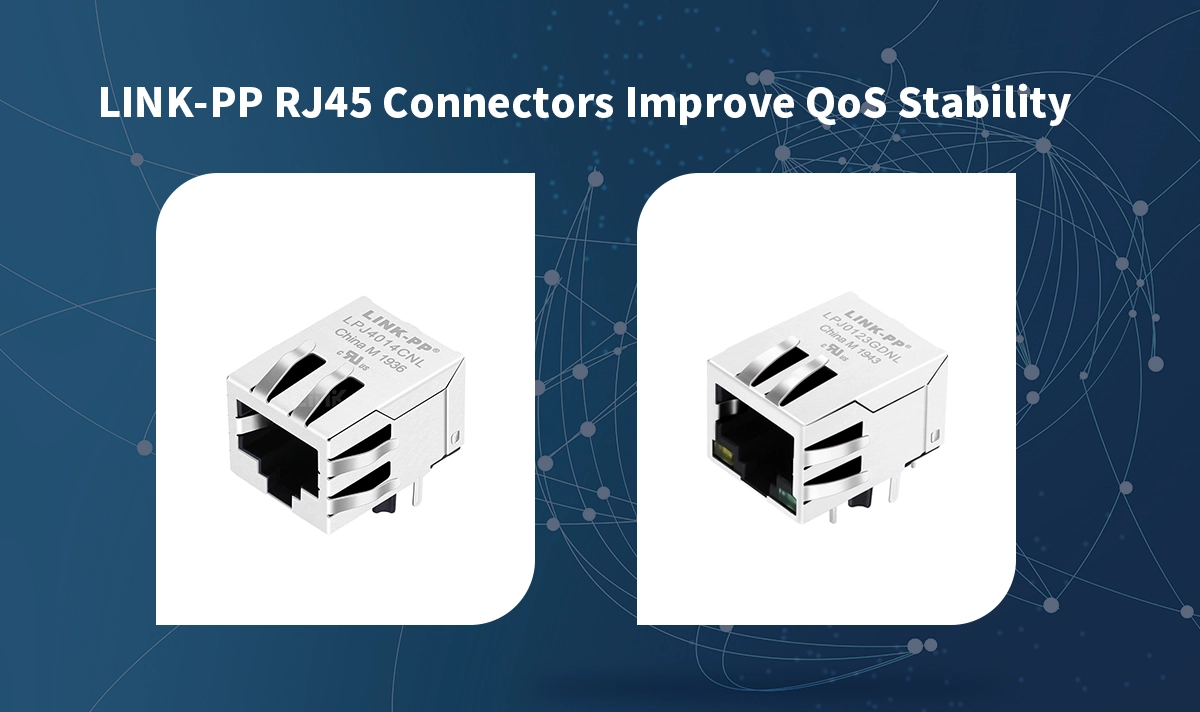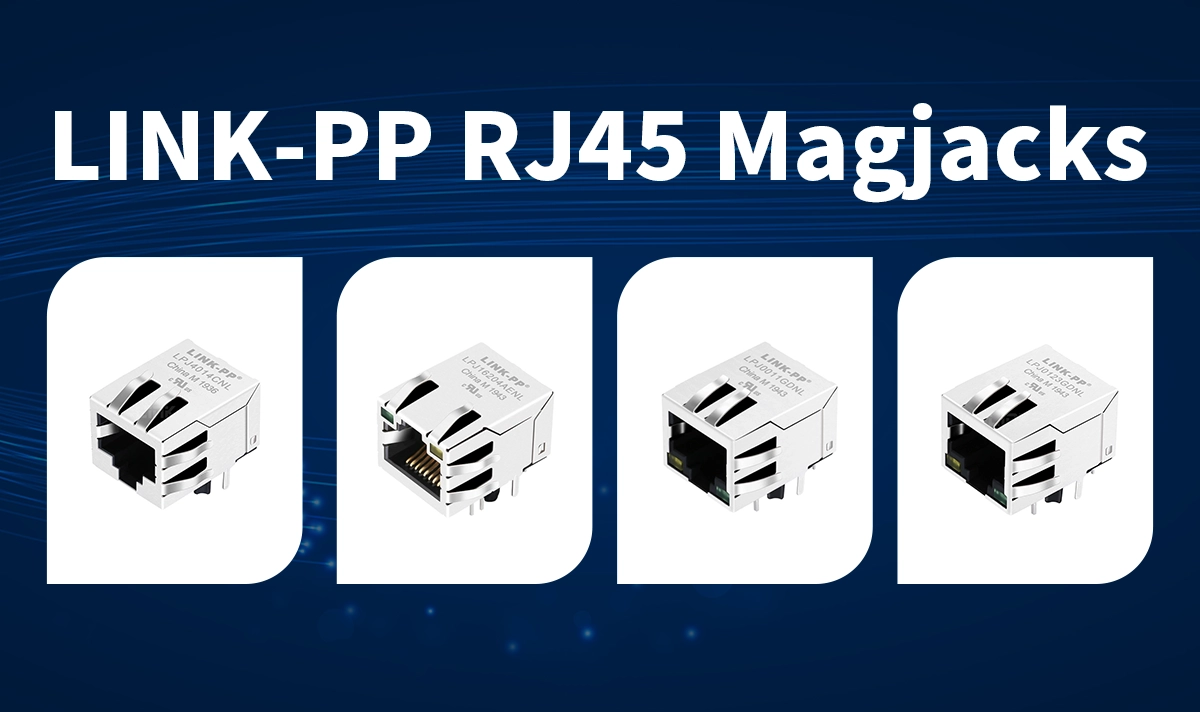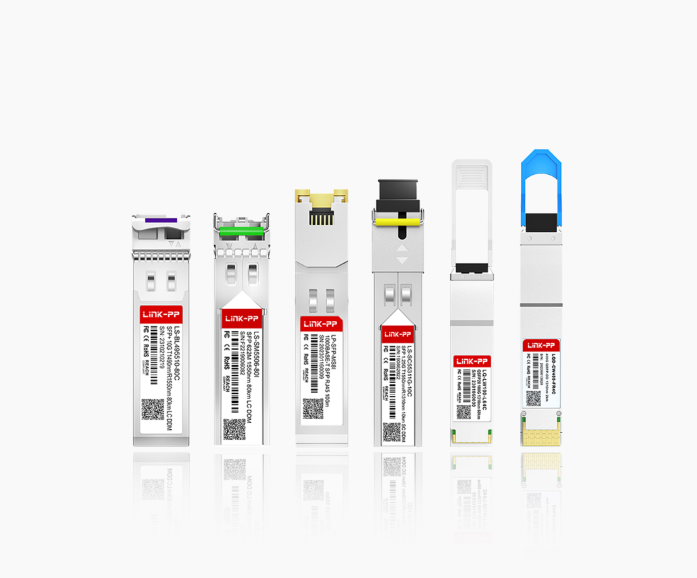
Quality of Service (QoS) is essential for networks supporting latency-sensitive applications such as VoIP, industrial automation, cloud services, and real-time analytics. While QoS policies work at the software and routing layer, the physical layer—especially the Ethernet connector—plays a critical role in determining whether QoS performance can be delivered consistently and without signal degradation.
LINK-PP’s RJ45 Magjack series enhances QoS stability by improving signal integrity, reducing electromagnetic interference, and offering robust magnetics performance that ensures reliable Ethernet transmission. This article explains how integrated connector architecture directly influences QoS outcomes and why LINK-PP Magjack solutions are preferred in professional networking equipment.
➡️ Why Physical Layer Quality Matters for QoS Stability
QoS mechanisms—classification, marking, queuing, and shaping—only work effectively when the physical transmission path remains stable. Any degradation at the Ethernet port layer can lead to:
Packet loss
Increased jitter and latency
Reduced throughput
Retransmissions caused by poor signal integrity
QoS cannot compensate for unstable physical-layer performance.
This is why the integrated magnetics inside RJ45 Magjack are crucial.
➡️ How LINK-PP RJ45 Connectors Improve QoS Stability
1. Superior Signal Integrity through Optimized Magnetics
Each LINK-PP RJ45 Magnetic Jack includes high-performance magnetic modules engineered for:
High common-mode noise rejection
Stable impedance balance across all Ethernet pairs
Lower insertion loss and return loss
Consistent high-frequency performance for 1G/2.5G/5G Ethernet
Result: Lower bit error rate (BER), fewer retransmissions, and more stable QoS across loaded networks.
Representative LINK-PP products:
LPJ4014CNL (Industrial-grade 10/100 Base-T Magjack, LED options)
LPJ0123GDNL(PoE/PoE+ capable Magjack for IP telephony)
2. EMI Reduction for Better Latency and Reliability
Electromagnetic interference (EMI) is a major cause of jitter and packet corruption.
LINK-PP Magjack solutions integrate:
Enhanced shielding structures
Multi-layer noise suppression
Transformer coils optimized for isolation
Optional EMI tabs for chassis grounding
By lowering external and internal noise, the Ethernet port becomes more resilient—ensuring stable latency, minimal jitter, and predictable QoS behavior.
3. Stable PoE Performance to Protect QoS-Critical Devices
Many QoS-dependent devices rely on PoE, such as:
IP phones (VoIP)
Security cameras
Building automation sensors
LINK-PP PoE/PoE+/PoE++ Magjack modules include:
Current-balanced transformer coils
High-quality isolation components
Heat-stable magnetics for long-term operation
Stable PoE delivery ensures powered endpoints do not exhibit packet delay, reboots, or drops that could disrupt QoS flows.
4. Designed for Harsh and High-Load Environments
Industrial or high-density networks demand physical components that withstand:
Wide temperature ranges
Continuous high traffic load
Frequent power cycles
Mechanical vibration or shock
LINK-PP offers industrial-grade RJ45 Magjack rated for -40°C to +85°C, maintaining stable electrical performance across conditions—critical for maintaining QoS guarantees in:
Edge computing devices
Industrial automation controllers
Smart grid equipment
5. Reduced Crosstalk for High-Bandwidth QoS Channels
High-speed Ethernet traffic is particularly vulnerable to crosstalk between twisted pairs.
LINK-PP Magjack designs integrate:
Optimized PCB winding layout inside the module
Pair-to-pair isolation techniques
Shield-enhanced internal chambers
These features minimize NEXT and FEXT, supporting high-priority data (voice, video, control signals) with consistent throughput under heavy load.
➡️ Applications Where LINK-PP Magjack Boost QoS Stability
▷ Enterprise Networking
Routers, switches, and APs require connectors that maintain consistent performance under multi-queue QoS scheduling.
▷ VoIP and Unified Communications
Low jitter and steady latency are critical—LINK-PP Magjack helps maintain voice clarity.
▷ Data Centers and Cloud Edge Nodes
QoS-based routing depends heavily on stable packet delivery across high-speed, high-density interfaces.
▷ Industrial Ethernet
Profinet, EtherCAT, and TSN rely on deterministic latency—improved by stable connector magnetics.
▷ Security and Surveillance
Cameras running PoE with bandwidth shaping require stable connectors to avoid frame drops.
➡️ Recommended LINK-PP RJ45 Magjacks for QoS-Focused Designs

From LINK-PP’s official product catalog:
https://www.l-p.com/store-17492-integrated-rj45-connector.htm
Featured options:
LPJ4014CNL – Industrial-grade Magjack Magjack for enterprise switches
LPJ16204AENL – PoE+ Magjack for IP cameras and APs
LPJ0011GDNL – High-isolation Magjack for VoIP phones
LPJ0123GDNL (PoE/PoE+ capable Magjack for automation networks)
All optimized to deliver stable magnetics performance, protecting QoS across modern IP networks.
➡️ Conclusion
QoS performance depends on more than software policies or switch configurations—the quality of the physical Ethernet interface is equally critical. LINK-PP RJ45 Magjack strengthens QoS stability by enhancing signal integrity, minimizing EMI, stabilizing PoE delivery, and enabling consistent high-speed data transmission.
For network equipment manufacturers seeking reliable, scalable, and cost-effective solutions, LINK-PP Magjacks provide a proven hardware foundation to support QoS-critical applications across enterprise, industrial, and data center environments.
➡️ FAQ
1. How does an Integrated RJ45 Magjack impact QoS performance?
Integrated RJ45 Connector modules influence QoS stability by improving physical-layer transmission quality. Better magnetics, shielding, and impedance balance reduce packet loss, jitter, and retransmissions—all of which directly affect QoS-sensitive traffic such as VoIP and real-time control systems.
2. Why are magnetics important for maintaining stable latency?
Magnetics determine how well Ethernet signals are isolated and balanced across twisted pairs. High-quality magnetics—from manufacturers like LINK-PP—minimize noise, distortion, and mode conversion. This helps maintain predictable latency and consistent performance under high network load.
3. Can a better RJ45 Magjack design reduce jitter?
Yes. Jitter is often caused by signal interference or poor common-mode rejection. LINK-PP Magjack modules feature optimized transformer designs and enhanced shielding that reduce internal and external EMI, resulting in lower jitter for time-sensitive applications.
4. Does PoE performance influence QoS stability?
Absolutely. Unstable PoE power delivery can cause VoIP phones, cameras, and APs to reboot or drop frames. LINK-PP PoE/PoE+/PoE++ Magjack provides balanced current handling and robust isolation, ensuring stable operation for QoS-critical devices.
5. Are LINK-PP Integrated Magjack suitable for industrial QoS applications?
Yes. LINK-PP offers industrial-grade Magjack rated for –40°C to +85°C, with reinforced shielding and magnetics optimized for deterministic Ethernet protocols. These connectors maintain QoS stability even in electrically noisy or harsh environments.
6. Does RJ45 Magjack support multi-Gigabit QoS traffic?
Many LINK-PP models (1G, 2.5G, 5G) are designed with low insertion loss, low return loss, and reduced crosstalk, making them suitable for high-bandwidth QoS flows such as 4K video, AIoT sensor data, and cloud edge services.
7. Why choose LINK-PP over other RJ45 Magjack suppliers for QoS-driven designs?
LINK-PP provides consistent transformer performance, global compliance (UL, RoHS, REACH), competitive pricing, and proven reliability across enterprise, telecom, industrial, and data-center equipment. This stable physical-layer foundation helps manufacturers achieve more predictable QoS behavior.




